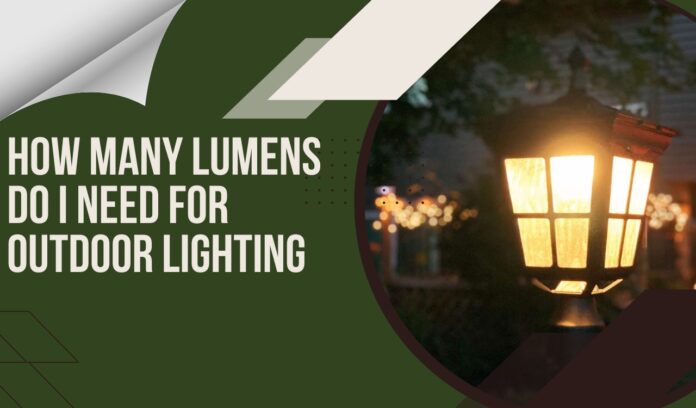Outdoor lighting is not as easy as it looks. It is all about your art, your artistic brain and how it works. It represents how creative you are and your choice of how you decorate your landscape view.
You have to be careful about many different things. However, they increase the beauty of your home and garden very much. But you have to be very selective and conscious about the count of lumens you are using in your outdoor lighting.
Keep in mind to focus not only on how to decorate your outside of the house but also on what number of lumens are necessary for natural enchantment.
Because if you use extra luminations, which are not required for your outdoor lighting, they will create a very bright look which would be annoying for the eyes. Alternatively, if you choose a very few lumens for your landscape lighting, it would not give you the results you want.
You have to be very choosy and selective about the number of lumens. Here, I am helping you in selecting how many lumens would be necessary and will create a beautiful and attractive look without giving you fatigue.
What Are Lumens and How Do They Differ From Wattage?
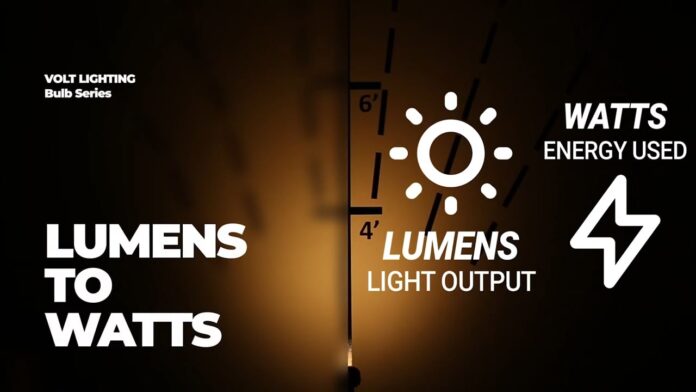
Lumens and watts are two measurements that are commonly used when it comes to light bulbs, but they measure different things. Watts refer to the amount of energy that a light bulb uses, whereas lumens refer to the amount of light that the bulb produces.
Lumens are a more accurate way of measuring the brightness of a light bulb, as they take into account the actual amount of light that is emitted. Wattage is not always a good indicator of brightness, as some bulbs may use less energy but produce more light due to more efficient technology.
For example, an LED light bulb may only use 10 watts of energy, but it can produce the same amount of light as a 60-watt incandescent bulb. In this case, the LED bulb has a higher lumen output, making it more efficient and cost-effective in the long run.
When purchasing light bulbs, it is important to consider both the wattage and lumens to ensure that you are getting the desired brightness and energy efficiency. The packaging of light bulbs typically displays both measurements to help consumers make informed decisions.
How to Calculate Lumens for Outdoor Lighting
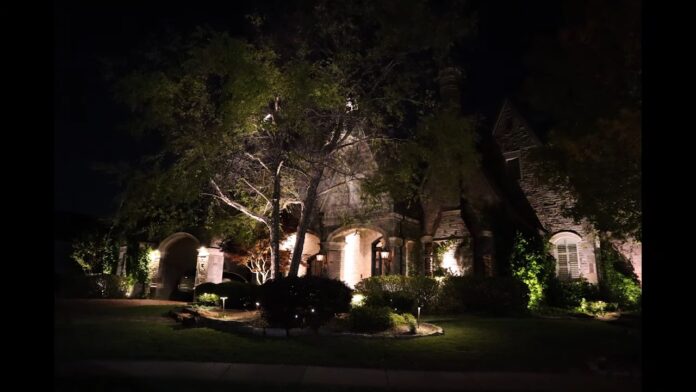
If you want to calculate the lumens for outdoor lighting, you need to know the area you want to light up and the amount of light you want to achieve. Lumens are a measure of the total amount of visible light emitted by a source, so the more lumens, the brighter the light.
To determine the total lumens needed for your outdoor lighting, you need to multiply the square footage of the area by the desired illumination level in lumens per square foot. For example, if you have a 10 x 10 foot patio and you want to achieve 20 lumens per square foot, you would need a total of 2,000 lumens (10 x 10 x 20 = 2,000).
Once you know the total lumens needed, you can select the appropriate outdoor lighting fixtures that will provide the desired level of illumination. It is important to consider the placement and direction of the fixtures to achieve the best lighting results.
Keep in mind that different outdoor lighting fixtures have different lumen outputs, and you may need to use a combination of fixtures to achieve the desired level of illumination. For example, floodlights typically have a high lumen output, while path lights may have a lower lumen output.
The Best Amount of Lumens For Outdoor Lighting

Read all the details mentioned below on the count of Landscape Lightning so you will be able to light up your home perfectly the way you want.
Unwritten Rule
This unwritten rule that professionals always follow regarding landscape lighting: ” 50 lumens per square foot”.
Although there is this estimation, the most critical factor responsible for detecting the need for shine in your outdoor areas is what you prefer the most. Furthermore, the spacing between the lamps, the site you are lighting and the area size are also crucial. Keep in mind all of these factors and get to the answer of these factors, and then detect the number of lumens you should use for perfect lighting.
Here is a list and the ideal number of lumens according to the areas present to make your landscape lighting look attractive.
For Stairs Lightning
Lightning in stairs is very necessary because it will provide a pathway for you. Make sure to light the path of the stairs so that the light falls all over the stairs and not on the half stairs. Moreover, if the light is only on the half stairs, it would cause more harm than advantage.
Additionally, you can place two larger bulbs on both ends in addition to these lumens so the staircase pathway would be lit just the way you want.
Patio
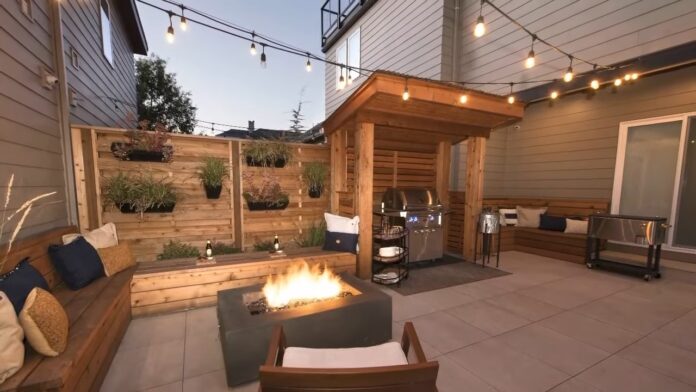
Patio lighting can be tailored to create either a bright or cozy atmosphere, depending on the intended use of the space. In general, patio lighting focuses on providing ambient illumination. The ideal number of lumens required would depend on the size of the patio.
For smaller patios, around 600-700 lumens would suffice, while larger patios may require 1200-1600 lumens. A variety of lighting fixtures can be used to create the desired mood. For example, string lights are typically kept at 40 lumens, while overhead hanging lights are usually around 80-120 lumens.
Deck
Deck lighting is similar to patio lighting in that it is designed to create a comfortable and ambient environment. If there are steps on the deck that may pose a hazard, it is important to ensure that these areas are well-lit. Bright lighting can be used to illuminate the steps or individual step lights can be installed for added safety.
Typically, a cosy and intimate atmosphere will have lumens count of 80, but if you want your deck to be livelier, stretch it up to 120 lumens. If you still need more light, opt for different fixtures that you can turn on/off. This way, you can enjoy the space’s cosiness without completely trading off its functionality.
Garden
Gardening landscape lighting is different for different regions. There are smaller trees, shrubs and other plants and specific areas on which you want to put more focus. Choose the lumens according to them. The outdoor garden is an area where there are different places that you want to brighten more than others.
For an average size plant and smaller shrubs, 30 to 50 lumens look best.
Similarly, for more giant trees, somewhere between 70 to 90 lumens will look fabulous.
These numbers can be varied according to your taste.
Garage and Driveway
The garage is the area where you park your car. The bulbs that are placed in the garage and driveway area are mostly those which are lit on their own when they detect any movement. This should not be very sparkling as it will not look very good. Moreover, they should not be interrupting your neighbour’s windows, garage, door or garden. These lights guide you throughout the pathways and garage.
Swimming Pool
The pool area is not required to be very lit. It should contain bulbs that give you a dreamy and attractive view of your pool.
They will not make your pool over sparkling and will not leave it in the darkness. Moreover, it will provide the ideal and beautiful view for mental peace. Make your pool light warm enough to give you more smoothness and mental relaxation while swimming.
Wall Lighting
Wall looks very lovely when there are a perfect number of lumens on it. It should not be over-enchanting.
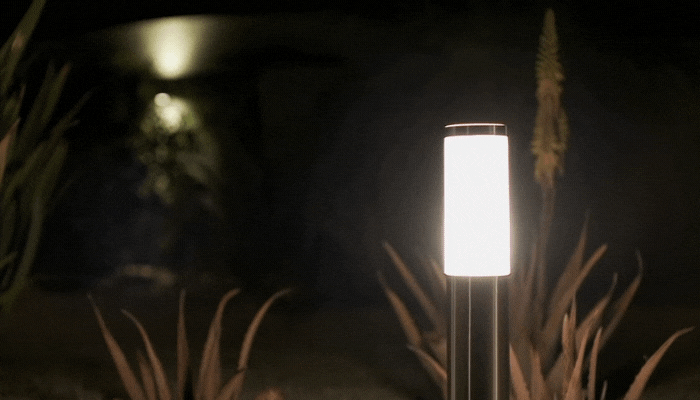
FAQs
Are 800 lumens very bright for a dining area?
It depends on your choice. If you prefer bright light while eating, you can go with more lumens, but if you like a cosy environment and warm feeling while having dinner, you can select somewhere between 400 to 850 lumens.
How many lumens are considered bright?
The brightness of a light is measured in lumens, and the number of lumens required to be considered bright varies depending on the context. Generally, a bulb with 800 to 1100 lumens is considered bright enough for most applications, including general room lighting, outdoor lighting, and task lighting. However, this can vary based on personal preference and the specific lighting needs of a particular space.
For example, in an outdoor setting, a light with 1200 to 1600 lumens may be required for a larger patio or deck, while 600 to 700 lumens may be sufficient for a smaller space. In a task-oriented setting such as a workshop or kitchen, brighter lights in the range of 2000 to 5000 lumens may be necessary to provide adequate illumination.
Is the higher the lumen, the better?
No, not; the number of lumens depicts the amount of light you are having. Moreover, it’s not always necessary that higher numbers of lumens are always better because, in some areas, you should put lowlights which is only possible with a low lumens count.
Conclusion
Make sure to select various colors and bulbs to make your landscape lighting more attractive and appealing. Start with the minimum number of lumens and increase until you feel the view is perfect for you.
The range of lumen that is mentioned above under every different heading is approximately measured. Make sure to keep in mind all the other factors that affect your landscape lighting. Moreover, you can increase and decrease the number of lumens according to your requirement.

